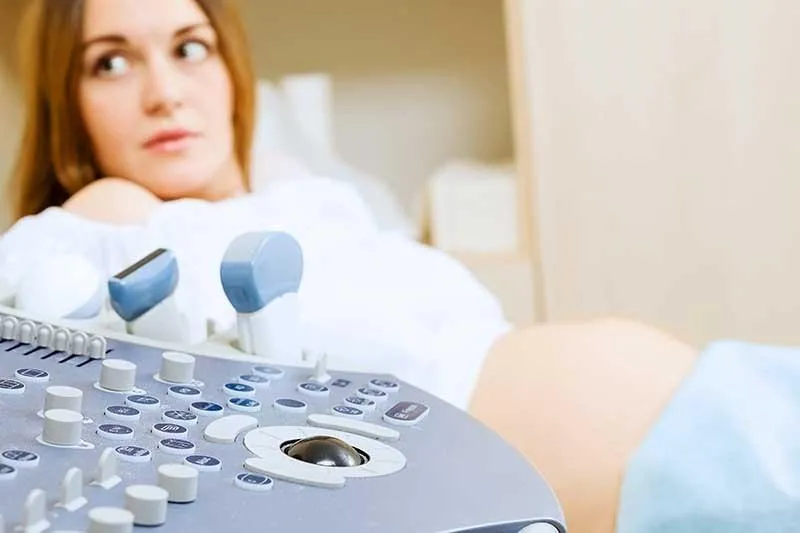- Home
- Scans for Women
- Scans for Men
- Msk
- Pregnancy
- Cardiovascular
- About
- Book a Scan
- Blog

An article published in the Daily Mail on 28th of July with the title: 'How could a doctor tell us our baby had DIED in the womb? Couple's fury after 'miscarriage' scan blunder almost led them to abort their healthy daughter', describes how a baby came close to being aborted when the parents told that the baby had died in the early weeks of pregnancy.
The couple were given the devastating news that the mother suffered early fetal demise at 6 weeks gestation during an early pregnancy scan. The scan was performed by a reputable ultrasound clinic in London that specializes in baby scans.
You can read the full article here.
We would like to reassure our pregnant mothers that in our London ultrasound clinic our sonographers follow the latest guidelines from NICE, ISUOG and BMUS and that we are not trying to cut corners by offering substandard cheap private scans.
The NICE guidelines for diagnosing viable intrauterine pregnancy using ultrasound are as follows:
1.4.4 Inform women that the diagnosis of miscarriage using 1 ultrasound scan cannot be guaranteed to be 100% accurate and there is a small chance that the diagnosis may be incorrect, particularly at very early gestational ages.
1.4.5 When performing an ultrasound scan to determine the viability of an intrauterine pregnancy, first look to identify a fetal heartbeat. If there is no visible heartbeat but there is a visible fetal pole, measure the crown-rump length. Only measure the mean gestational sac diameter if the fetal pole is not visible.
1.4.6 If the crown-rump length is less than 7.0 mm with a transvaginal ultrasound scan and there is no visible heartbeat, perform a second scan a minimum of 7 days after the first before making a diagnosis. Further scans may be needed before a diagnosis can be made.
1.4.7 If the crown-rump length is 7.0 mm or more with a transvaginal ultrasound scan and there is no visible heartbeat:
seek a second opinion on the viability of the pregnancy and/or
perform a second scan a minimum of 7 days after the first before making a diagnosis.
1.4.8 If there is no visible heartbeat when the crown-rump length is measured using a transabdominal ultrasound scan:
record the size of the crown-rump length and perform a second scan a minimum of 14 days after the first before making a diagnosis.
1.4.9 If the mean gestational sac diameter is less than 25.0 mm with a transvaginal ultrasound scan and there is no visible fetal pole, perform a second scan a minimum of 7 days after the first before making a diagnosis. Further scans may be needed before a diagnosis can be made.
1.4.10 If the mean gestational sac diameter is 25.0 mm or more using a transvaginal ultrasound scan and there is no visible fetal pole:
seek a second opinion on the viability of the pregnancy and/or perform a second scan a minimum of 7 days after the first before making a diagnosis.
1.4.11 If there is no visible fetal pole and the mean gestational sac diameter is measured using a transabdominal ultrasound scan:
record the size of the mean gestational sac diameter and perform a second scan a minimum of 14 days after the first before making a diagnosis.
1.4.12 Do not use gestational age from the last menstrual period alone to determine whether a fetal heartbeat should be visible.
1.4.13 Inform women that the date of their last menstrual period may not give an accurate representation of gestational age because of variability in the menstrual cycle.
1.4.14 Inform women what to expect while waiting for a repeat scan and that waiting for a repeat scan has no detrimental effects on the outcome of the pregnancy.
1.4.15 Give women a 24-hour contact telephone number so that they can speak to someone with experience of caring for women with early pregnancy complications who understands their needs and can advise on appropriate care[3].
1.4.16 When diagnosing complete miscarriage on an ultrasound scan, in the absence of a previous scan confirming an intrauterine pregnancy, always be aware of the possibility of ectopic pregnancy. Advise these women to return for further review if their symptoms persist.
1.4.17 All ultrasound scans should be performed and reviewed by someone with training in, and experience of, diagnosing ectopic pregnancies.